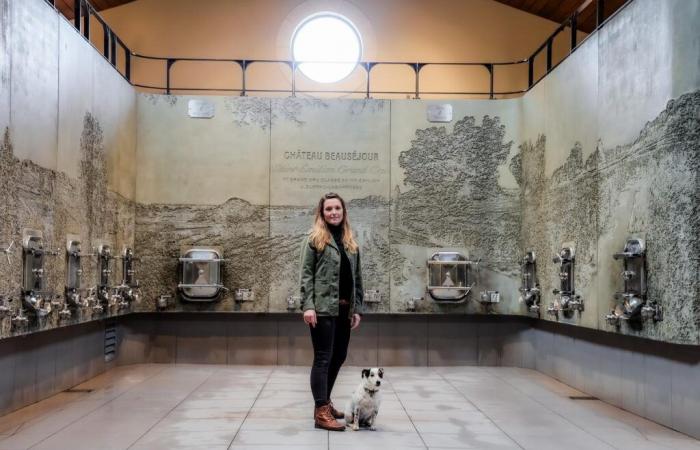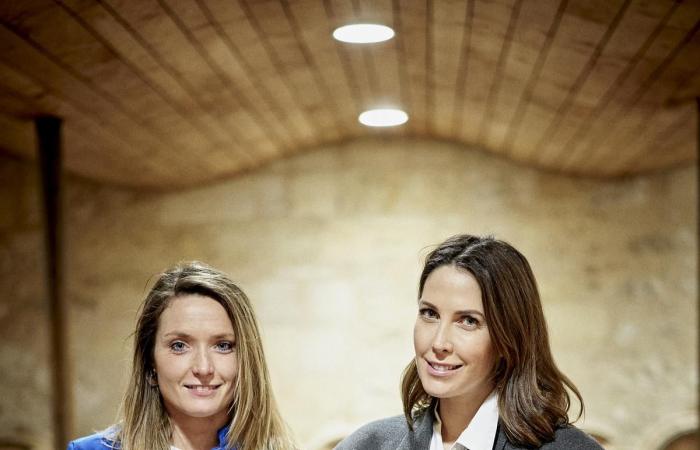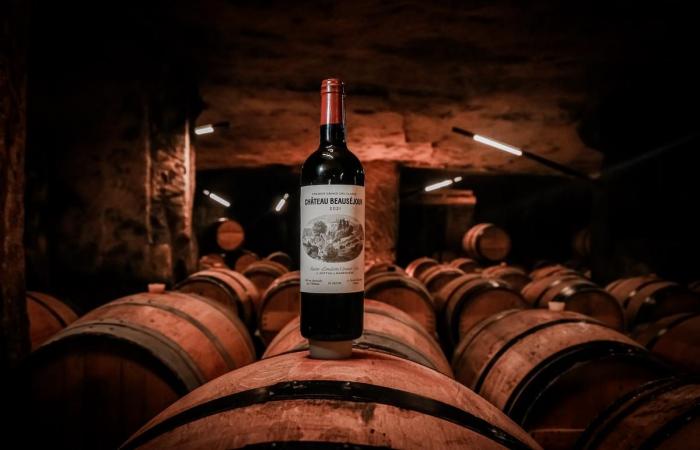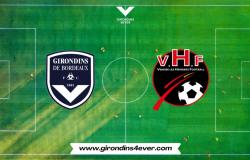We cannot say that in Saint-Émilion, Château Beauséjour had a great reputation until 2021 (1). Certainly, it is a Premier Grand Cru Classé – mention which is at the top of a classification which includes 82 properties – but this nugget of 6.8 hectares of vines located on beautiful terroirs of the appellation lived in discretion.
Prisca Courtin is the head of the family cosmetics group Clarins, owner of the castle since 2021.
Château Beauséjour
Château Beauséjour
Joséphine Duffau-Lagarrosse and Prisca Courtin want to consolidate Beauséjour at the top of the Saint-Émilion wine hierarchy.
Then the news put it in the spotlight with a sale with twists and turns and a price considered astronomical by local observers: 70 million, or almost 10 million per hectare. “It’s the price of the inaccessible. Beauséjour is the best in Saint-Émilion. This price is not abnormal, see those charged in Burgundy,” specifies Prisca Courtin – an allusion to the purchase by François Pinault of Clos de Tart, a Burgundian pearl of 7.5 ha for an amount estimated at 280 million euros. At 37, she is the head of Clarins, a French cosmetics giant founded by her grandfather seventy years ago and which has therefore been the owner of the premises since April 2021.
Precise vinifications
On site, constantly followed by her dog Tokay, Joséphine Duffau-Lagarrosse, 34, wants to break away from this business to concentrate on wine production. An oenologist, she is co-shareholder and co-manager of a château operated by her family since 1847 (she represents the ninth generation). She is one of the 32 heirs who ultimately transferred the property to Clarins. “I didn't want to sell and I always thought I would one day come back to make wine in Beauséjour. It is the place of my childhood and I am very attached to it. I thrive working with Prisca Courtin, even though we come from two different backgrounds,” explains the woman who previously held positions abroad and in the Médoc.
GUILLAUME BONNAUD / SO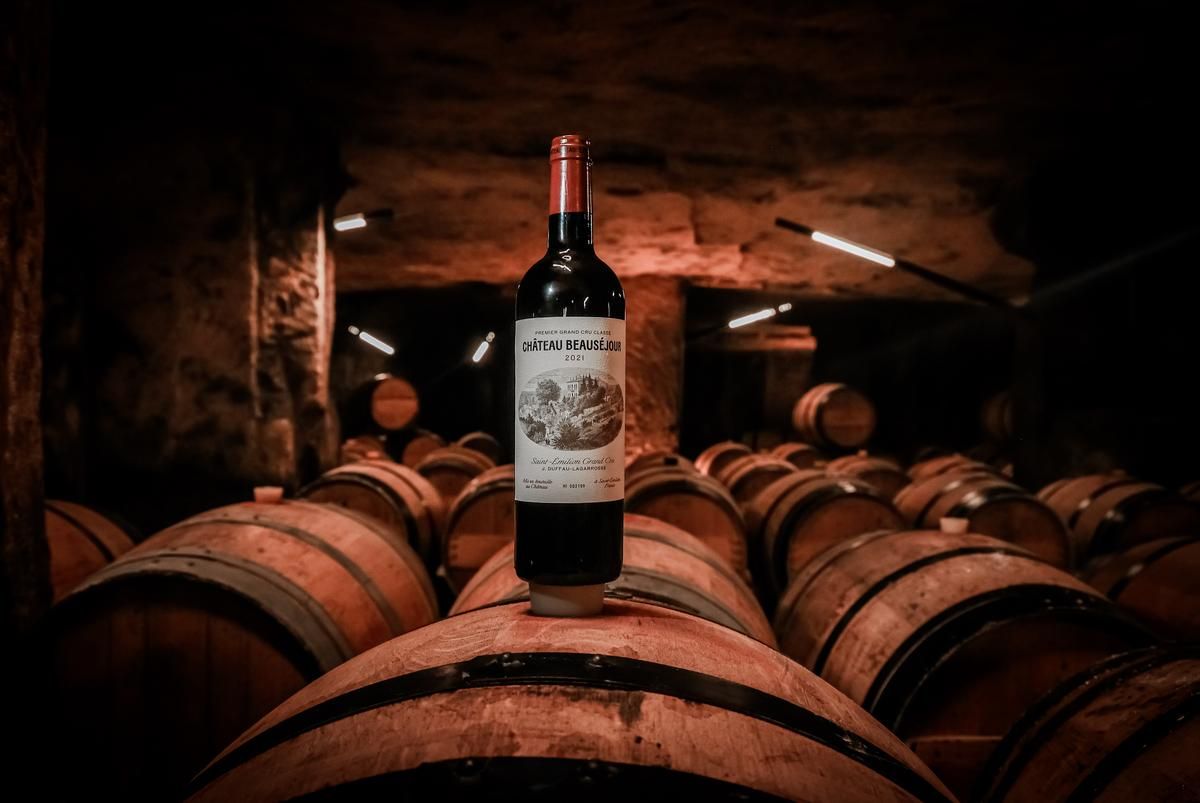
The bottles have new labels since the 2022 vintage.
First stage of the renewal: a vat room designed by the Bordeaux architectural firm BPM, released with the 2024 harvest and where you can work in daylight. Around fifteen small concrete vats arranged in a horseshoe are there to vinify the 13 micro-terroirs identified on the farm as closely as possible. “It’s an ergonomic work tool where I was able to make wine alone – the château only has five employees. We will further improve the quality of our wines. » And it will be this year with historically low yields: 22 hectoliters per hectare, while the AOC would allow almost three times more. “Mildew is responsible. All of Bordeaux is heading towards big problems with this disease that we can no longer control. » An original fact, a fresco sculpted on the facades of the tanks recalls the surrounding landscapes.
We will further improve the quality of our wines
Then head to the quarries located under the cellar. A timeless place – found in many of the appellation’s châteaux – where the wines are aged for around a year in barrels. It is from there that stones were extracted for decades to build in Bordeaux and elsewhere. The temperature is constant there. “Great advantage, the wine evaporates very little and we do not need to regularly top up the levels in the barrels [technique dite de l’ouillage, NDLR]. »
GUILLAUME BONNAUD / SO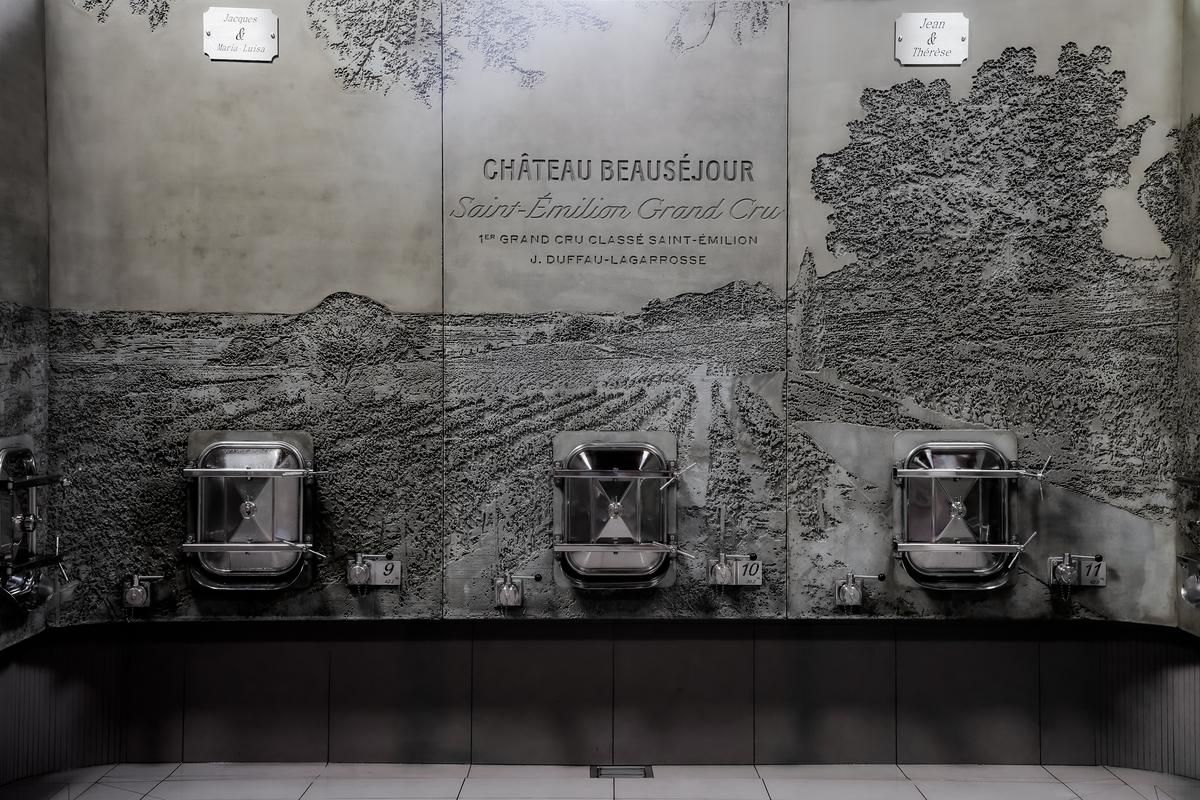
The landscape around the castle is sculpted on the concrete tanks.
To establish yourself as a woman
It now remains to consolidate the property's commercial policy, with labels revised since the 2022 vintage and numerous trips on Joséphine Duffau-Lagarrosse's agenda (2). “You have to fight to establish yourself as a woman in the wine world,” she assures, heading towards the house which will also be redone: tasting room, reception areas and rooms are planned there, for use professional. “With Joséphine, we want to raise the profile of Bordeaux wines, which are the best in the world,” assures Prisca Courtin in conclusion. Arriving somewhat by chance in this wine-growing environment, I quickly became attached to it. »
(1) On the label, the name of the château is Beauséjour, with “J. Duffau-Lagarrosse” (J for Joséphine) mentioned below. Before the buyout, it was indicated “Héritiers Duffau-Lagarrosse”. Property not to be confused with its neighbor, Beau-Séjour Bécot.
(2) The first wine is around 100 euros per bottle; the second, Croix de Beauséjour, at 35-40 euros.
in justice
The Cuvelier family, owner of Clos Fourtet, a classified growth neighboring Beauséjour, is taking legal action. Positioned to be the buyer initially, it was ultimately preferred to the Clarins group. The local Land Development and Rural Establishment Company (Safer), involved in the transaction, is blamed by the Cuveliers. At the start of 2024, the Bordeaux Court of Appeal opened the way for a trial to be held which will notably analyze the legal structure of the sale.

